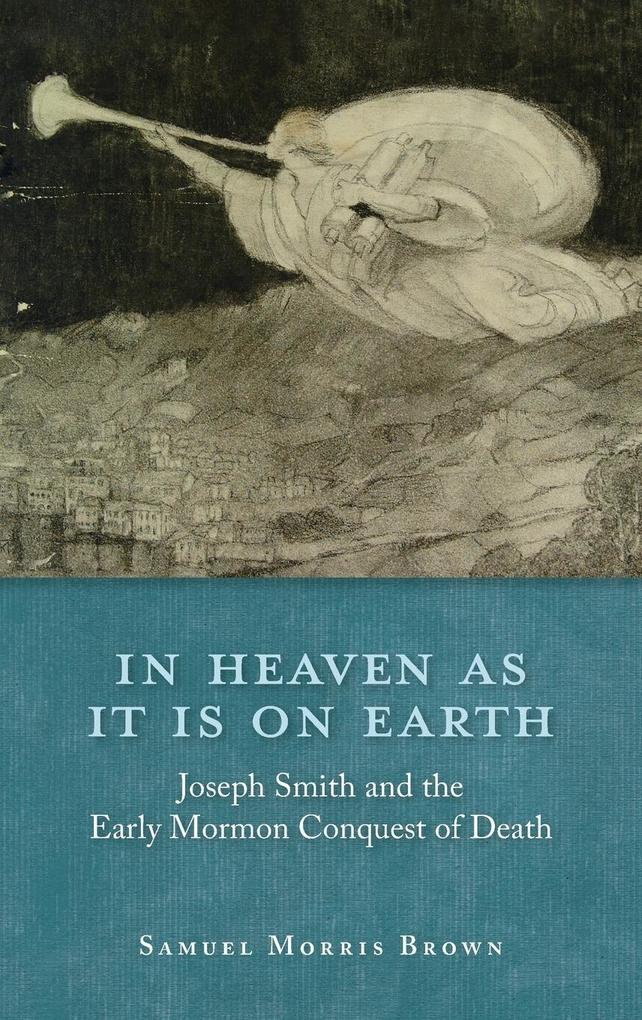
Zustellung: Fr, 01.08. - Mi, 06.08.
Versand in 2 Wochen
VersandkostenfreiBestellen & in Filiale abholen:
A groundbreaking interpretation of earliest Mormonism that frames this distinctive religious movement in terms of founder Joseph Smith's struggle to conquer death.
Inhaltsverzeichnis
- Part I: Death, Dying, and the Dead
- Chapter 1. ''Melancholly Reflections'': Joseph Smith and Holy Dying
- Chapter 2. The Corpse and its Rest
- Chapter 3. Relics, Graves, and the Treasure Quest
- Chapter 4. Hallowed Ground: Tombs, Indians, and Eden
- Chapter 5. Seerhood, Pure Language, and the Silence of the Grave
- Part II: Everlasting Communities
- Chapter 6. The New and Everlasting Covenant
- Chapter 7. Negotiating Death and Afterlife in Nauvoo
- Chapter 8. The ''Lineage of my Preast Hood'' and the Chain of Belonging
- Chapter 9. Divine Anthropology: Translating the Suprahuman Chain
- Chapter 10. ''Death Cannot Conquer the Hero Again'': The Death and Afterlife of a Martyr
Produktdetails
Erscheinungsdatum
02. Januar 2012
Sprache
englisch
Seitenanzahl
408
Autor/Autorin
Samuel Morris Brown
Verlag/Hersteller
Produktart
gebunden
Gewicht
724 g
Größe (L/B/H)
250/169/35 mm
ISBN
9780199793570
Entdecken Sie mehr
Pressestimmen
"In this groundbreaking and important volume, Brown... delves deeply into the many streams of thought that informed Smith's formulation of the life hereafter... Emerging at a time of intense religious competition, Smith and his closest associates developed a wonderfully complex belief system that mapped out the next life with clarity and consistency. Brown offers us a masterful look at this intriguing aspect of the Mormon worldview. This is must reading for students of the American religious tradition."--Publishers Weekly, Starred Review
"This is a book purportedly about the dead and the conquest of death in early Mormonism. It is actually much more than that. It traces the development of a large number of Joseph Smith's most fundamental teachings from the beginning to his death. Brown weaves the most exotic elements of Mormonism-seerstones, new names, hieroglyphs, angels, the Adamic tongue, Masonic catechisms, seals, ritual adoptions-into an illuminating and compelling explication of Joseph Smith's beliefs about the temple, family, and human salvation."
---Richard Bushman, Gouverneur Morris Professor Emeritus of History, Columbia University
"Scholars have looked long and hard at the Puritan way of death as well as the development of the funeral industry's way of death. Working in between those historical domains on early Mormon views and practices of holy dying, Samuel Brown has produced an imaginative, yet gravely serious book-one of obvious consequence for Mormon studies, but also one of broad resonance in American studies."
---Leigh E. Schmidt, Edward Mallinckrodt University Professor, Washington University in St. Louis
"This is a brilliant work of intellectual and cultural history, in which Brown finds compelling continuities between Joseph Smith's early supernatural quests and his later ministry. All the while, Brown charts Smith's death-defying project as one that is both intensely personal and steeped in a rich and won
"This is a book purportedly about the dead and the conquest of death in early Mormonism. It is actually much more than that. It traces the development of a large number of Joseph Smith's most fundamental teachings from the beginning to his death. Brown weaves the most exotic elements of Mormonism-seerstones, new names, hieroglyphs, angels, the Adamic tongue, Masonic catechisms, seals, ritual adoptions-into an illuminating and compelling explication of Joseph Smith's beliefs about the temple, family, and human salvation."
---Richard Bushman, Gouverneur Morris Professor Emeritus of History, Columbia University
"Scholars have looked long and hard at the Puritan way of death as well as the development of the funeral industry's way of death. Working in between those historical domains on early Mormon views and practices of holy dying, Samuel Brown has produced an imaginative, yet gravely serious book-one of obvious consequence for Mormon studies, but also one of broad resonance in American studies."
---Leigh E. Schmidt, Edward Mallinckrodt University Professor, Washington University in St. Louis
"This is a brilliant work of intellectual and cultural history, in which Brown finds compelling continuities between Joseph Smith's early supernatural quests and his later ministry. All the while, Brown charts Smith's death-defying project as one that is both intensely personal and steeped in a rich and won
Bewertungen
0 Bewertungen
Es wurden noch keine Bewertungen abgegeben. Schreiben Sie die erste Bewertung zu "In Heaven as It Is on Earth" und helfen Sie damit anderen bei der Kaufentscheidung.









